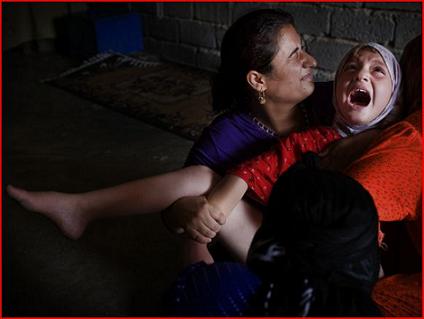 I have a love-hate relationship with Awareness Days. First, I do think they are needed to help promote awareness and educate society on various heath causes and human rights issues. Many such days make headlines thanks to political pushes and great community support, while others with little political power and international appeal pass with little notice. Such is the case with the issue of Female Genital Mutilation (FGM). Its awareness day has come and passed. It didn’t have the fanfare and flare of breast cancer awareness, which tends to fill the streets with a sea of pink for the entire month and beyond. But the dark and horrid truth behind FGM receives little media attention; it has no designated color, other than the blood it spills with needless cuts.
I have a love-hate relationship with Awareness Days. First, I do think they are needed to help promote awareness and educate society on various heath causes and human rights issues. Many such days make headlines thanks to political pushes and great community support, while others with little political power and international appeal pass with little notice. Such is the case with the issue of Female Genital Mutilation (FGM). Its awareness day has come and passed. It didn’t have the fanfare and flare of breast cancer awareness, which tends to fill the streets with a sea of pink for the entire month and beyond. But the dark and horrid truth behind FGM receives little media attention; it has no designated color, other than the blood it spills with needless cuts.
February 6th was International Day of Zero Tolerance against Female Genital Mutilation (FGM). The United Nations sponsored day was designated to generate awareness of FGM, also know as female genital cutting, and to promote its eradication. The day was established nine years ago, on February 6, 2003 by Stella Obasanjo, the First Lady of Nigeria, with the official declaration on “Zero Tolerance to FGM” in Africa during a conference organized by the Inter-African Committee on Traditional Practices Affecting the Health of Women and Children (IAC). Following the IAC’s declaration, the UN Sub-Commission on Human Rights adopted the day as an international awareness day. Sadly the awareness day has yet to gain a great deal of global media attention and promotion, as is often the fate of FGM and it’s female victims.
The practice known as Female Genital Mutilation (FGM) or Female Circumcision can be the partial or full removal of the external genitalia. FGM can often be fatal, especially when done in non-sanitary conditions, and/or by non-medically trained persons. The fatal results of FGM can often be caused by excessive bleeding, transmission of disease, or shock. The complications and the long-term effects of FGM can include: pain, infertility, difficulties in child birth, trouble with menstruation or urination, problems and extreme pain with intercourse, lack of sexual desire, no sexual stimulation, and mental illness. For the women and girls who are victims of FGM the pain and torture of the procedure are far from a one-time affair, and both the physical and mental scars can last a lifetime.
While international awareness and laws against the practice have undoubtedly increased in the last decade, one of the biggest wins came in February 2008, when ten UN agencies came together to end female genital mutilation. They concurred that individual countries have the best means to change the terrible tradition. Countries such as Uganda have since implemented a ban, but the issue of FGM remains one of the most heartbreaking and painful reminders of ongoing gender inequality and abuse. The harmful practice affects some 140 million girls and women, and it is estimated that three million girls are at risk of being subjected to the horrific ritual, according to the World Heath Organization (WHO) . In many countries, education and awareness have successfully eliminated the FGM in communities and helped establish laws to ban it, but in countries such as Somalia and Sudan, 98% and 89% of young girls respectively are forced to go through the painful and needless practice.
Rates of FGM have fallen in many countries, but the fight to end the practice is far from over. Efforts must continue in countries where the practice has a long-standing history, but the fight for gender equality and an end to sexual violence is global, and will not be won without a united front. FGM must be considered a human rights violation, not a one-time instance of abuse. Therefore, education and awareness on its long term effects must be put into place, as should laws to address the severity of the crime. This legislation must be adequately implemented and violators prosecuted. Governments and NGO’s must work together with community leaders on all levels to see that the entire community is adequately educated on the facts of FGM and the long term effects it has on a girl’s mental and physical health.
The hope and dream is not that FGM awareness days gain a color to flood the streets once a year, but to advocate for awareness year-long and promote and fund programs to educate communities. However, the lack of awareness of the day itself may be a depressing indicator of just how far we have to go.
Please see my previous posts on FGM, including: Ending Female Genital Mutilation (2010), Is a Continental Ban Against Female Genital Mutilation on its Way in Africa? (2010), Are we closer to an end for Female Genital Mutilation? (2009), The Global Fight Against FGM (2008)